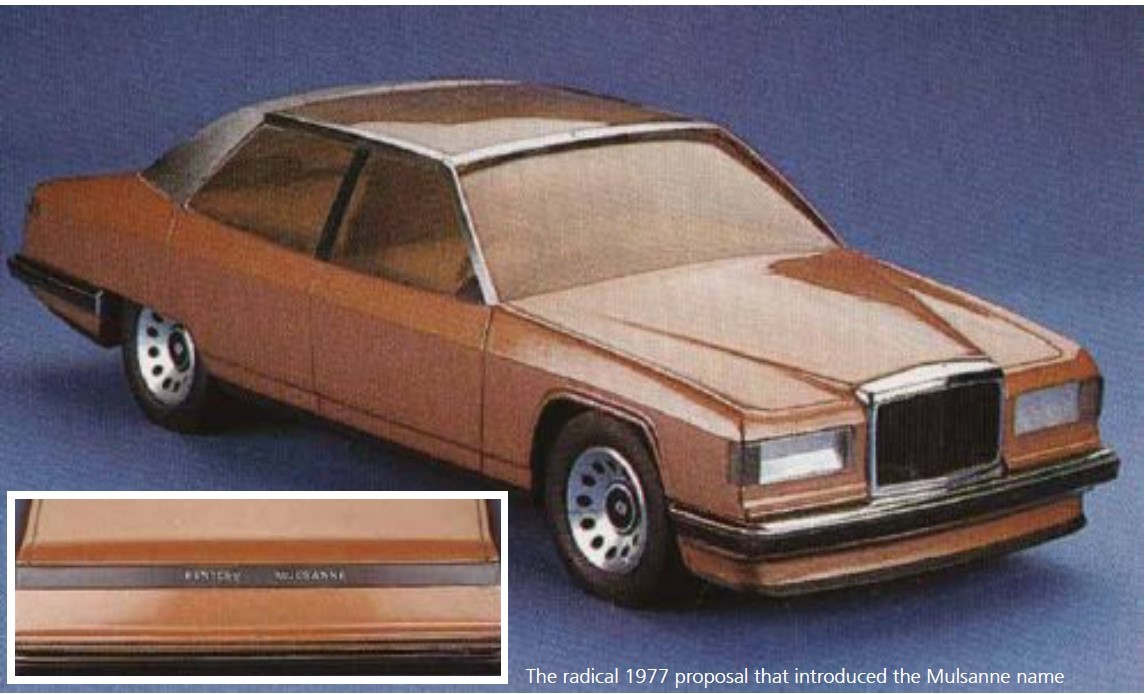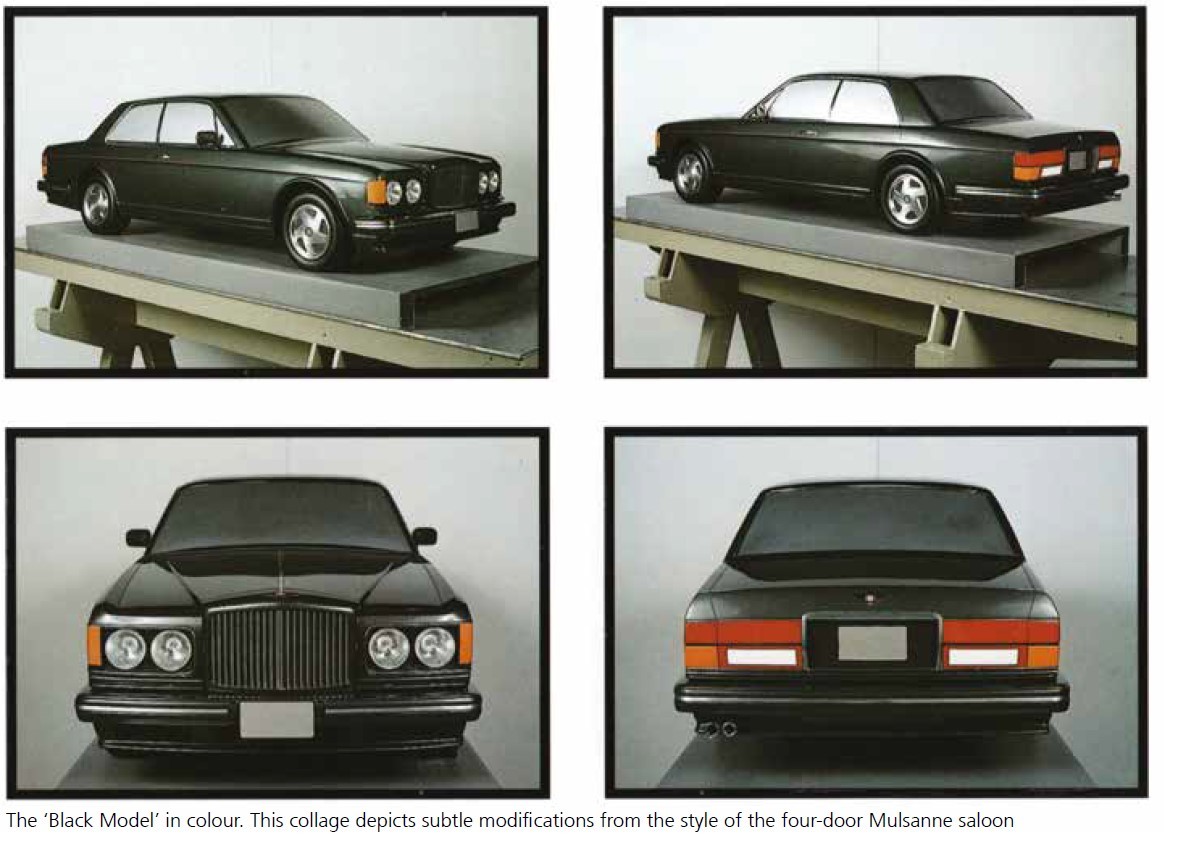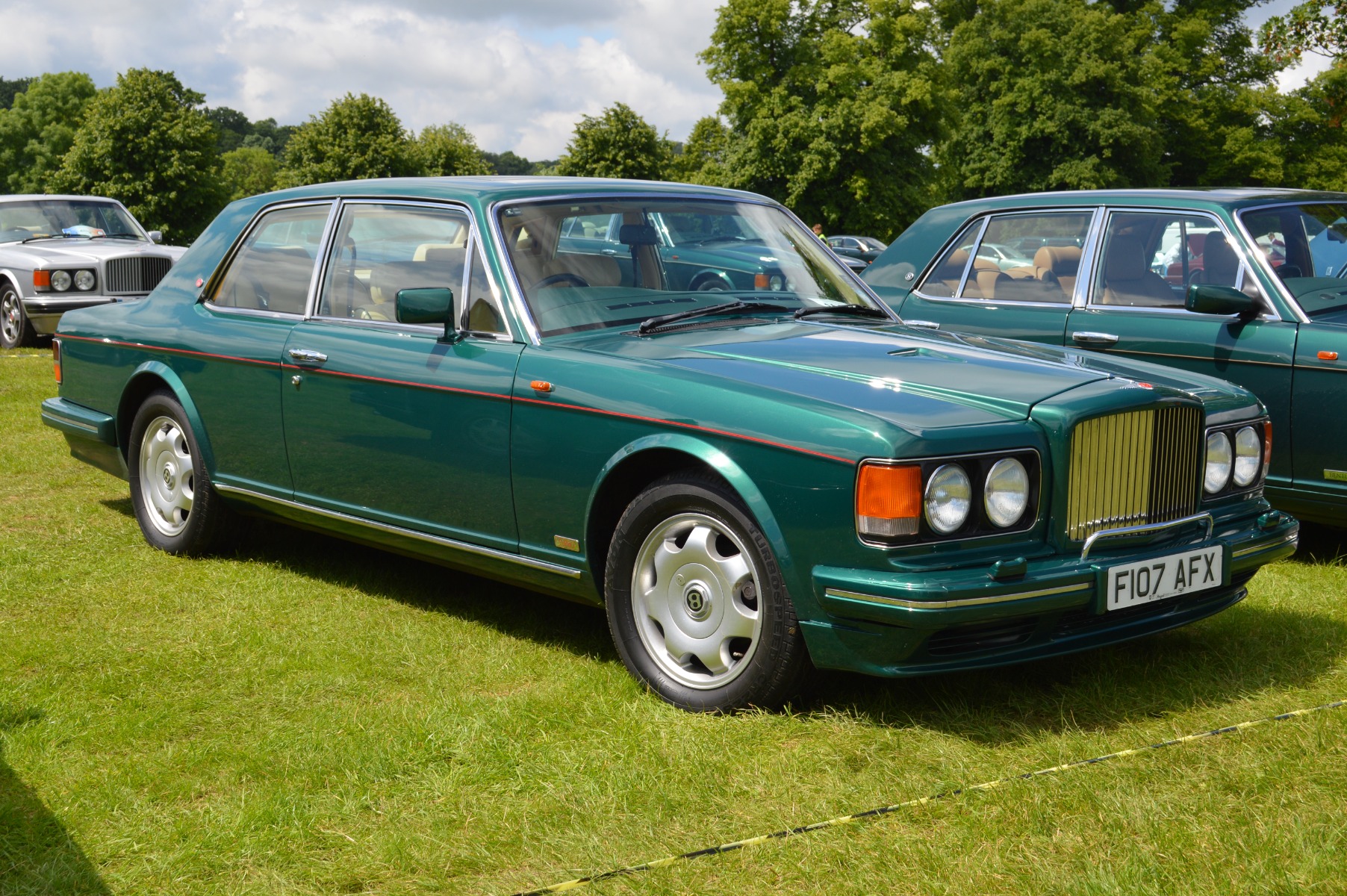
Bentley Prototypes - Turbo R Two Door
Once again we’re faced with a conundrum. Our main photo clearly depicts a two-door version of the 1980s Mulsanne saloon, captured on one of the modelling tables in the Styling Office at Bentley HQ – yet no two-door Mulsanne or Turbo R ever rolled off the production line at Crewe. So how does this prototype relate to the two-door Bentleys that did appear in this era: 1985’s Project 90 concept car and the Continental R announced in 1991? To understand how tangled the story became, let’s start by rewinding to 1977 and zoom in on the office of David Plastow, Chairman, and MD of Rolls-Royce. Sitting resplendent on his desk is a model of a dramatic two-door Bentley saloon. With bluff frontal treatment, squared-off front wheel arches, semi-enclosed rear wheels, and a pronounced lift over the rear axles, it combines elements of the long-serving Corniche with hints of the SZ series to be launched in 1980 – and mixes in a dash of US extravagance to boot. Just visible on the boot lid are the letters MULSANNE. Yes, this is the first sighting of the now iconic name that has graced two generations of Bentleys to date. Revelatory in concept, the model and a Rolls-Royce four-door equivalent were designed by Graham Hull of Crewe’s Styling Office but were destined to remain a blind alley. The conservatively styled production version of the Mulsanne was eventually introduced as a traditional four-door saloon in 1980.
Nonetheless, the launch of the Mulsanne Turbo in 1982 and the Turbo R in 1985 not only lit the touchpaper for the resurgence of the Bentley marque but also sparked intense debate at Pyms Lane about the best strategy for building upon that success, with no fewer than four interrelated but conflicting projects fuelling the internal controversy and competing for Crewe’s tightly restricted development funds. The first of these projects was the replacement for the long-serving Corniche, the second was the potential Bentley Camargue Turbo (eventually transmuted into the Mulsanne Turbo), the third was the dramatic Project 90 concept (approved in early 1984, unveiled in March 1985 and intended to lay down a marker for future sporting Bentleys) and the fourth was an ongoing request from John Stephenson, Director of Product Planning, for… a two-door Mulsanne, presumably sparked by the Turbo’s success. Here lies the genesis of our mystery photo. By 1985 the request had taken concrete form.


To quote Graham Hull, then recently appointed head of Crewe’s Styling Department: “We had produced quite a few drawings and models over the years, using the existing saloon body to a greater or lesser extent as the basis. The ‘black’ quarter-scale model dating from 1985, for instance, was nothingmore than a four-door saloon with a flatter, shorter roof and wider doors. This concept would have caused the new model to resemble the successful Corniche Coupé too closely. “We built several more models along the same lines, with the doors becoming ever wider and the C-post ever narrower, but in the end we found out that we had altered the basic car to such an extent that the cost of a rehash would have been almost the same as that of a new design. We also knew in the meantime that Project 90 had done a lot to stimulate interest in a new Continental Coupé, so that the company was seriously considering a complete re-engineering job on this highly successful design study.” In 2014 Hull further commented: “Considering a coupé’s raison d’être is to look chic and even stunning, SZ’s Bank of England persona was not the place to start.” These were the factors that tolled the death knell for a two-door Mulsanne saloon and consigned our photo to a dusty filing cabinet. By March 1987 the decision had been taken to cancel a direct Corniche replacement and start work on a new Bentley coupé, styled around renderings produced by Hull in late 1986

This became the Continental R, which was launched to the thunderous strains of Zadok the Priest at the Geneva Show of 1991. However, the saga of the two-door Mulsannes doesn’t end here. Where Bentley Motors deigned not to tread, independent British coachbuilders seized the opportunity to exploit a small but lucrative gap in the market. First into the breach was the illustrious house of Hooper. Appointed an official Rolls-Royce coachbuilder, Hooper’s services were aimed at offering a high level of personalisation for standard cars, creating unique models for its customers through highly skilled craftsmanship. Initially, the company concentrated on modifying existing cars provided by dealers from their showrooms or by new buyers who wished to add a touch of individuality to their cars. Due to the company’s success, by 1985 it had launched into a second phase, offering extensive bodywork modifications in cooperation with Crailville.
While the best known were the outrageous Emperor stretch limousines, the most successful was the conversion of the standard Mulsanne and Spirit four-door saloon into the Hooper Two Door Coupé. While the Crewe Styling Office experimented with different door widths, narrower C pillars, and flatter roofs, Hooper took the straightforward approach of lengthening the front doors, moving the B pillars rearward, and welding in fixed panels to replace the rear doors. The fixed rear quarter light maintained the shape of the rear door, leaving the C pillar untouched. The size of the rear window was reduced, a feature previously seen on other Hooper models. With these alterations, the two-door acquired a sophisticated and sought-after shape which met the demands of 17 fortunate owners: a single Mulsanne Turbo, 13 Turbo Rs, and three Silver Spirits. Emboldened by success, at the 1987 Geneva Motor Show Hooper presented a new two-door saloon based on the Turbo R platform and called the Empress II.
The car was launched to celebrate the 180th anniversary of the coachbuilder, with lines intended to evoke the company’s famous Empress style of the 1940s and 1950s. Indeed, among the most distinctive elements of Osmond Rivers’ original Empress design were the scalloped form of the rear quarterlight and the dramatic sweep of the rear roof line down towards the boot, both features incorporated into the Empress II in evolved form. The entire body was completely different. The radiator grille and headlamps were inclined rearward, the flanks featured strong swage lines and heavily lipped wheel arches, and Hooper’s trademark bumpers, painted in body colour, also featured built-in fog lamps at the front. Proclaimed as the most expensive car in the world (prices varied from £275,000 down to a trifling £170,000 depending on the extras fitted), five examples of the Empress II found homes among the world’s mega-rich. There’s one further footnote to the two-door Mulsanne’s. Robert Jankel was a businessman and coachbuilder known for his Panther J72, De Ville and Lima and for his stretched Rolls-Royce limousines, which attained official Rolls- Royce approval. Far less known are his Bentley Azur (sic) Coupé and Spyder conversions offered the Turbo R. Visually, there is little to distinguish the Azur from the standard Hooper conversion and the number of cars actually built is unclear, although at least two Bentley two-door saloons were completed. In 1988 the conversion alone was priced at £47,000.
Davide Bassoli is the author of The Spirit of the Age, the definitive history of the Bentley Mulsanne and Rolls-Royce Silver Spirit cars.
Thank you to the Bentley Drivers Club (BDC) for giving us kind permission to use this article on our website.
Become a member of the Bentley Drivers Club today, visit www.bdcl.org/membership




14 Dec 2022